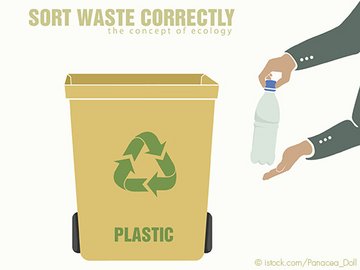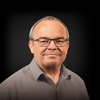Plastic packaging is everywhere. Classic glass bottles are seldom used anymore for mineral water and soft drinks. Consumers as a whole prefer this development because plastic means less weight to lug. Empty bottles are returned to the store in automated bottle deposit machines, and all other packaging is recycled.
But what happens with the plastic? Felix Meyer, a student from class 9D at the Osterholz-Scharmbeck Integrated High School in Lower Saxony asked himself this same question. He dealt with this topic intensely and discovered that plastic is a source of raw materials. The waste is sorted and ultimately returned to the raw material from which it was produced. This is the case with approximately 99 percent of plastic packaging. Almost half is used for the production of new plastic products, and the other half is “recovered for energy” (i.e., first and foremost, it is burned). Due to their mineral content, many plastics are a very good source of energy production.
To optimally recycle plastic, however, the waste must first be sorted. Since the turn of the millennium, this has increasingly been carried out automatically. NIR technology is used in the recognition and separation of different types of plastic: Each type of plastic absorbs different wavelengths in the infrared spectrum. Using a spectrometer, you can, therefore, determine which part comes from which material. Thus, different types of plastic can be separated one after the other in sorting facilities. However, this method is very expensive because several costly IR spectroscopes have to be used.
Felix had another idea: “Instead of radiating the object with a mixture of various wavelengths and then analyzing the complete reflected light with a spectrometer, I used six IR diodes with clearly defined wavelengths and measured the intensity of the reflected radiation. This produced a grid point spectrum consisting of six different wavelengths characteristic of each plastic. It is less conclusive than a conven-tional spectrum, but it is sufficient to distinguish one plastic from another.”
Just like any other scientist, the resourceful student had to overcome a number of hurdles in his “Young Researchers” experiment. The first hurdle was that the photodiode he was using turned out not to be sensitive enough. After a quick discovery search on the Internet, he contacted Laser Components. “Felix asked us for an IG22X500S4i photodiode; naturally, we sent him a free sample,” explained Uwe Asmus, a product engineer for IR components. “In fact, we were quite impressed that he had already begun working on such complex topics.”
Felix has ultimately been successful in clearly distinguishing eight different types of plastic using his experimental scanner. He has received several awards for his work and could even have an effect on the recycling industry: He has already applied for a patent for this method; after all, inexpensive alternatives to established technologies are always welcome.
www.jugend-forscht.de/teilnahme/alterssparten/schueler-experimentieren.html
The right detector for every situation
Different technologies can be used to detect IR wavelengths. LASER COMPONENTS has suitable components available: These include PbS/PbSe, (x-)InGaAs, InAs, and pyroelectric detectors, all of which are produced in house. We are more than happy to advise you; together we will find the appropriate detector for your application.





